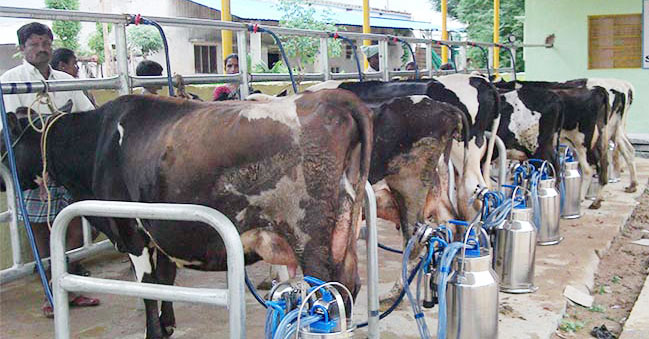A concerted effort, based on half-baked truth is being made by the lobbyists of foreign countries including New Zealand to influence Indian policy makers into allowing import of dairy products on minimal or nil import cost.
The representatives of New Zealand Government, their lobbyists and their RCEP negotiators have spread a false story that New Zealand already has FTAs with many large markets and will have barely 5% of its exports available for India if India opens its markets and so it should not be perceived as a threat.
If Indian Government and its RCEP Negotiators get convinced by this argument, then India will have become the top 5 export destinations of New Zealand.
How damaging could be even this 5 percent could be understood from the fact that 5% of total NZ exports of 34,47,000 (almost 35 lac MTs) to India is 1.72 lac MTs, which is almost one third of the total domestic production. Thus, India, will in effect, be surrendering 1/3rd of their total market to New Zealand.
We should not therefore assume that a small market access of just 5% of New Zealand producers will have no impact on our domestic producers, warns experts of the industry.
And if other RCEP countries too eye Indian market, the domestic production will totally collapse and India will become a net importer of dairy products at the cost of Indian milk producers, they asks. The situation will be unimaginable if the Government of India pursues similar FTAs with EU and gives market access to USA also, they felt.
It bears recall that India is the largest producer and consumer of milk in the world. There are demands from several countries to open up the Indian dairy market and this would have a detrimental effect on the Indian dairy industry which is a major source of livelihood and sustenance for our 10 crore milk producers.
Additionally, the growth projects of dairy sector in the country, as projected by NDDB and NITI Aayog also reveal how childish it would be to allow import, say industry experts. It is not for nothing that Amul Vice-Chairman Jetha Bharawd raised the matter in the Assembly, they remind.
The long term trend analysis done by NDDB, Ministry of Agriculture, Niti Aayog, OECD- FAO Dairy Agricultural Outlook 2019-2028 and even International Farm Comparison Network indicate that India’s dairy growth in production and consumption will continue for the next two decades and more.
India’s milk production increased from 80 million MT in 2000 to 180 Million MT at present and is likely to go up to 330 Million MT by 2034 as per the analysis done by the above organizations.
India will contribute more than 60% of the incremental milk the world will produce in the next 15 years and our overall share of the world milk production will grow to 31% compared to 20% at present from 14% in beginning of the year 2000, the study reveals.
In light of these facts, the question of allowing imports of any dairy product under any FTA/ RCEP does not arise. If undertaken, it would not augur well for the dairy industry with 10 crore farmer families dependent on it.
They reminded that New Zealand’s total population is just 48 lac compared to 134 crore of India. There are just 10,000 dairy farmers in New Zealand compared to 10 crore in India.
Experts quote the case of China. It is interesting to note that China’s milk production was growing very well up to the year 2008, but soon after signing FTA with NZ, their import dependency increased suddenly and resulted into a loss of growth in local milk production.
